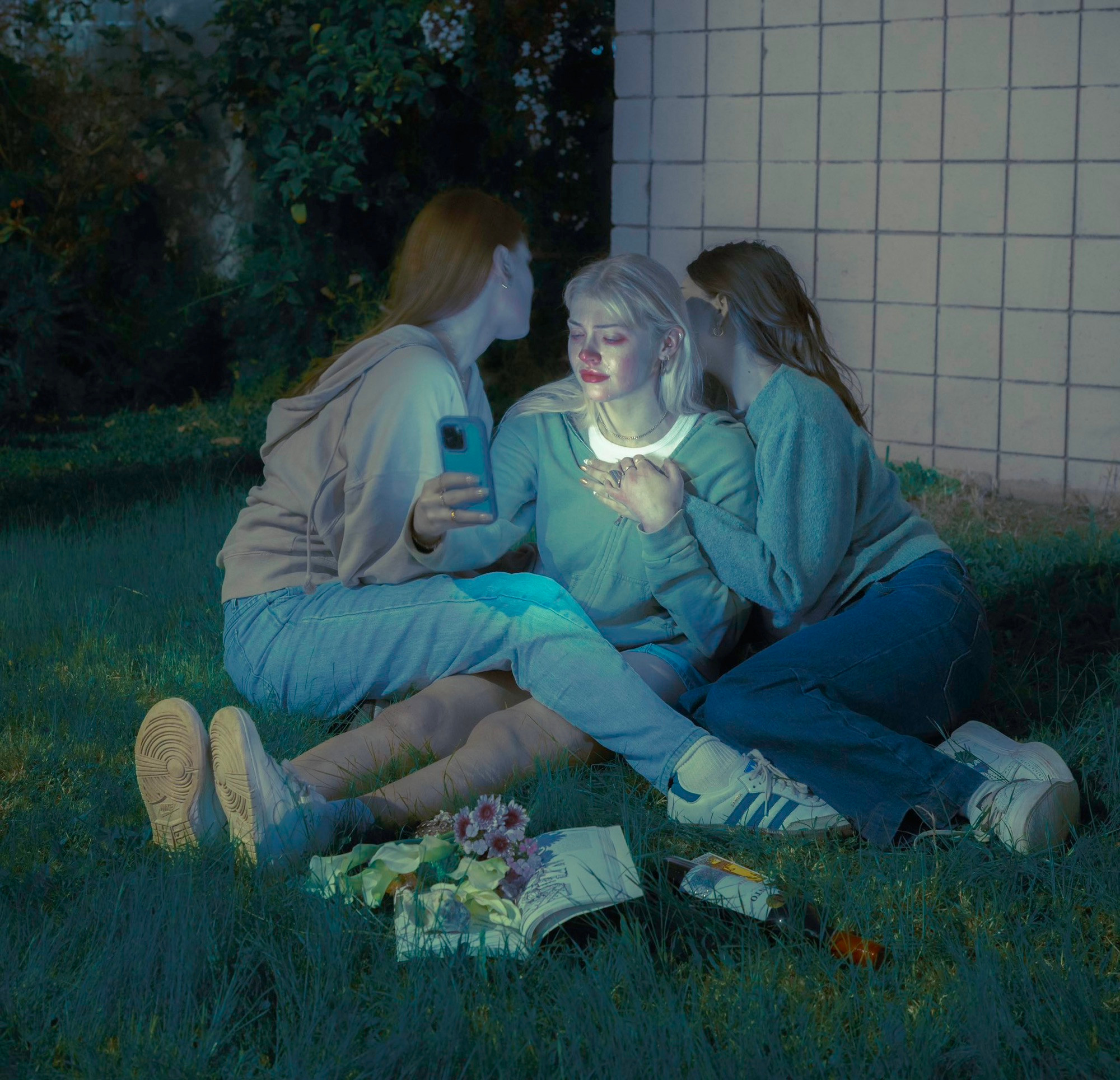I went to the theatre to see Oedipus this week with my friend Jay (thanks Jay!), and there was a moment towards the end of the show where the climactic, pivotal fact that (and I don’t think I’m spoiling anything here) Oedipus had in fact fcuked his mum ELICITED ACTUAL SHOCKED GASPS FROM THE AUDIENCE.
How? HOW IS IT POSSIBLE TO BE AN ADULT AND TO GO AND SEE THE PLAY OEDIPUS AND YET HAVE SEEMINGLY NO FCUKING CONCEPT OF THE MEANING OF THE TERM ‘OEDIPAL’ AND ITS ORIGINS?!
Anyway, the play is fcuking dogsh1t and I really wouldn’t bother (the lighting is nice, though).
I am still Matt, this is still Web Curios, and you are free to mine me for more pithy analysis of contemporary London culture at your convenience.

THE SECTION WHICH FEELS LIKE IT POSSIBLY OUGHT TO ADMIT THAT MAYBE PROJECT25 WASN’T IN FACT ‘QANON FOR LIBERALS’ AFTER ALL, PT.1:
- Picto World: Yes, ok, this entirely frivolous and pointless and pretty much wholly-unoriginal as a concept, but, at the same time, it has literally NOTHING to do with What Is Happening Out There and so as such it feels appropriate to lead with it. SMOOTH YOUR BRANES! Picto World is a small, collaborative (or adversarial, depending on how you approach it – but, per the aforementioned ‘What Is Happening’ line, can we maybe reserve some spaces where we’re *not* doing adversarial, please?) project–toy-thing which presents you, the visitor (yes YOU) with a representation of a globe, on which each country on the world map can be associated with an image, creating a sort of nation-by-nation patchwork collage of pictures, each (sort-of) representing the country in question. The images aren’t fixed, so anyone can jump in and swap out one picture for another, making this a slowly-evolving patchwork quilt of how the internet’s collective unconscious feels the globe’s nation-states should be pictorially represented (there’s some moderation going on to ensure that nothing vile gets posted, which seems to be working fine so far). Click on the images to see them in full (and to realise that some of them are gifs/videos) – necessary to work out what the fuck they’re depicting in some cases – and enjoy the genuinely weird sense of ‘countries as memes’ that you get (I have no idea, for example, who decided that Italy should be represented by a short clip of a topless man smoking three cigarettes simultaneously, but have to concede that on some level it sort-of makes sense). This is fun, and if you’re bored is an excellent place to spend the afternoon doing some light nationalistic trolling (although, on reflection, perhaps I shouldn’t be extolling the virtues of ‘comedy nationalism’ here in ugly old 2025).
- Aphantasia: I really, really like this; perhaps more conceptually than practically, but still. Aphantasia is basically a proto-social-network, text-based, whose interface is arranged in a node-based, visual fashion – so rather than showing posts as text arranged in chronological or algo-sorted order, shows them as a network of interconnected nodes, demonstrating the way in which each post relates to the wider ecosystem of information on the network; this gives you sense of the way in which conversations branch and fork and meander, and how different users engage with topics, and while it obviously doesn’t make it in any way easier to read than your traditional networks it DOES make it far more interesting from a ‘shape of topic’ point of view (which, now I write it down, will quite possibly mean nothing to anyone who isn’t me). Anyway, this is unlikely to ever evolve into anything more than a small, niche experiment, but I am very into whatever it’s creator is trying to do in terms of information visualisation, conversational taxonomy, network development and the rest (NO I PROMISE IT IS INTERESTING COME BACK).
- The Taylorator: Ok, this is both technical and almost certainly illegal in most places you’re likely to be reading this, but, also, I am VERY into the concept (NB: Web Curios would like to plainly state that it does not in any way advocate the disruption of radio signals and is in no way condoning or endorsing any activity that fcuks with the broadcast network! Honest!) – The Taylorator is, to quote the developer, “a piece of software which allows you to use an SDR (such as a LimeSDR) to transmit music on every valid frequency in the FM broadcast band. It’s named the Taylorator because it was originally written to broadcast Taylor Swift on every channel at once, to force everyone to listen to her music.” Basically this is code which, when combined with a USB-attached device which can broadcast on FM, lets you effectively override all the radio signals on that frequency over a small area with whatever you like – Taylor Swift, yes, but also SO MUCH OTHER STUFF. I am now slightly dizzy with the possibilities this affords and how you might use this for GENTLY SUBVERSIVE ENDS – at the very least there’s a lot of fun ways you could integrate this into experience design, immersive theatre and the rest, but also, obviously, a fcuktonne of ways you could just really mess with people’s heads in some creative and satisfying (for you) ways (but, again, please do not do this).
- Graze: Following the late-2024 flurry of excitement it very much feels like Bluesky user growth has hit a plateau again, suggesting that while people might be leaving Twitter, they’re perhaps not *desperate* for another text-based feed to take its place (SOCIAL MEDIA IS DEAD FFS IT JUST HASN’T STOPPED TWITCHING YET). Still, it persists (and, per some of my interactions on there this week, has managed to attract exactly the sort of moronic users that have characterised every single other social network since their advent, which I suppose is a sign of maturity of sorts), and as it matures is starting to develop a wider ecosystem of accompanying apps which take advantage of its open, friendly nature to build on top of the basic Bluesky experience. Such a tool is Graze, which basically lets you do a bunch of stuff to customise your Bluesky feed – effectively creating a selection of different algorithms to manage the way in which you receive information which you can switch between at your choosing. So, for example, Graze makes it (reasonably) trivial to create various feeds which include and exclude people based on their inclusion in starter packs, say, or have granular content restrictions in place, or to do a bunch of more complex stuff that integrates with other websites and APIs…basically this lets you turn Bluesky into something significantly more powerful, and potentially-commercially-useful (you can read more about the possibilities here, as the website is frankly not superb at outlining how powerful this all seems to be). This is interesting and obviously potentially really helpful to anyone looking to make the feed more practical, but there’s also part of me that read the explainer piece and some of the use-cases and got slightly saddened that rather than looking at new and innovative ways in which you might leverage the feed and the information we’re instead likely to get ‘ecommerce solutions’ and ‘TikTok, but for Bluesky’ which feels, well, a bit unambitous, frankly (says the person who creates nothing, ever, and should probably wind their neck in on reflection).
- WikiTok: Do you enjoy TikTok, but are you concerned that it’s possibly not the *healthiest* place to spend six hours a day, mindlessly swiping through infinitehumantelly? Welcome to WikiTok, then, which applies the tried, tested and obviously-terrifyingly-dopaminic ‘swipey’ interface and swaps out the human zoo video content with NOURISHING FACTS from Wikipedia. Next time you’re sitting staring mindlessly at your phone, why not feed yourself with LOVELY INFORMATION? This seems, as far as I can tell, to be almost entirely random, hence my having learned about pour-over coffee, Italian writer Marco Balzano and, er, Polish satellite TV stations, in the short time I’ve been refreshing my memory – this is honestly brilliant if you’re even halfway curious about the world and is a rare instance of a broadly-pointless website which probably won’t lop three points off your IQ every time you load it up.
- ReddTok: This, though, is basically crack – videos from Reddit with the TikTok interface, letting you take a whistlestop tour of what the world’s largest forum is sharing RIGHT NOW. No algorithm, no steering, just (seemingly) utterly random snippets of video from around the world which could be anything from (based on the past 30s) dogs, capybaras, film sets, more dogs, porpoises, vintage cigarette lighters OH GOD THIS IS LIKE FCUKING CRACK. As far as I can tell (based on an admittedly-very-limited sample size of videos) this doesn’t pull from anything labelled NSFW, so you’re unlikely to be confronted with anything too glistening and mucal – but, well, I am not 100% certain about that so please exercise caution should you decide to use this while out and about.
- The Blue Report: Seeing as we’re doing ‘stuff built on Bluesky’, The Blue Report collects the links that are being shared most-widely across the network at the moment (I think based on popularity over the past 24h, updated hourly). Which is in theory interesting, but which currently in practice seems to mean that everything is about That Fcuking Man (or That Other Fcuking Man) and all the different ways they appear to be attempting to dismantle the State apparatus of the US for their own personal gain (and that of their plutocratic pals), which means that you might want to wait to come back to this until he’s stopped dominating the news cycle for five minutes (possibly 2029).
- Boss: This is UTTERLY CHARMING. Boss is a small browser-based synthtoy made by, I think, Laura Sirvant, which lets you put together a relatively-simple track from a bunch of different beats and SFX, and which accompanies your musical noodlings with a genuinely beautiful, pixelart-style graphic of a ‘boss’ – besuited, balding, brogued-up – in a generic office space, grooving to your beats in a manner than can only be described as ‘deeply repressed’. Beautifully, the more complex you make your tune, the more engaged your little corporate avatar becomes, cutting increasingly complex rug for your viewing pleasure – honestly, I now want EVERY SINGLE SYNTH to come bundled with dancing avatar software like this, it is so beautiful and pure.
- The Tuxedo Society: I think this did numbers last weekend, based on a viral Insta video or two showing generically-attractive young white people performing wealth at a villa on Lake Como – The Tuxedo Society is, per the blurb, “a carefully curated community of exceptional individuals who embrace elegance, tradition, and the art of meaningful connections. From bespoke travel experiences to exclusive networking events, TuxedoSociety empowers its members to thrive in a world of limitless possibilities.” So, effectively, a member’s club – I mean, that’s literally it, this is all it is, and not even a real one with a real fcuking club ffs – which puts on pseudo-swanky-looking events at which said members (please reflect on the context in which I might be using this specific term) can cosplay plutocracy in rented tuxedos. There was a LOT of discourse around this swirling this week, about the ‘Saltburn aesthetic’ and the appeal of ‘old money vibes’ in this new, hyperconsumerist1980sera in which we appear to find ourselves, which just made me realise that one of the most frustrating things about getting old is finding out that everything repeats itself and NOOONE OTHER THAN YOU SEEMS TO REALISE THIS. Old internet heads will OF COURSE remember that in the…mid-00s, I think? There was a very early, very exclusive social network called A Small World, which was originally access-gated to *actual* Old Money people – we’re talking people with titles (weirdly I had a login to this because I knew an actual Italian countess in my youth – this is, for anyone who knows me irl, fairly off-brand, its fair to say), who used it to literally post things like ‘flying into Gstaad tomorrow evening; does anyone have a reliable chauffeur I can borrow for 48h’. It’s since degraded into irrelevance, but it’s worth remembering because THERE IS NOTHING NEW UNDER THE SUN. Although I suppose this is the aspirational, premium mediocre equivalent, so perhaps it is new after all and I am an idiot. Either way, you might want to check out the Insta feed in case you feel like experiencing some strong, and not necessarily positive, emotions towards your fellow human beings.
- Dub: Do you despair as to how you’re going to squirrel away enough cash to survive in the weird, scary times between ‘your job becomes obsolete’ and ‘someone sorts out UBI or we solve scarcity’? Yeah, me too. Still, perhaps THIS will solve all your woes! Dub is an app which does the same thing as various e-trading platforms have been offering for a few years, to whit the opportunity to effectively clone someone else’s portfolio and trades, so you’re basically just running exactly the same buy/sell choices as the guru of your choosing. Which, on the one hand I can see sounding superficially attractive but which raised a LOT of questions as soon as I started to think about it longer than approximately 30s. Like, what’s the lag on trades? It says ‘same time, same price’ but unless there’s something VERY fancy going on under the hood that simply doesn’t seem feasible. Is there a cap on the number of people who can ‘follow’ a particular tipster? Because, based on my limited knowledge of ‘how this stuff works’ (tbf ‘limited’ is a generous interpretation) it feels like if there are big groups copying marginal activity then that starts to tip things in ways that may not be wholly beneficial. Still, those of you understand more about things like ‘money’ and ‘stocks’ and ‘wild speculation in the hope that this will be your ticket out of the white-collar bullsh1t mines’ might see this as a CRAZY OPPORTUNITY, so, well, fill your boots (and don’t forget all the LOVELY WORDS AND LINKS when you’re all rich).
- The Self-Help Book From That Severance TV Show: I am impressed at the degree to which Severance is leaning into the marketing – I mean, it’s obviously an insanely-expensive show and they need to do numbers, but there’s some commitment to the bit on display which I admire quite a lot. This is an actual audiobook of the fictional self-help manual from the show (which, again, I have never seen and will never watch – apologies if I am misrepresenting what this is but, well, I don’t wholly care tbh) which is, I think, only partial but is committed enough for me to be impressed.
- Cats In Art: I’m genuinely dismayed that until this week I had never heard of the KattenKabinet, an Amsterdam museum dedicated to cats in art. I get the feeling this is an institution best experienced in person, but while there’s only limited elements of the collection available to view online there *is* an excellent little Google Streetview-style interactive tour you can take so that you too can enjoy a taste of felines in fine art and sculpture, all sitting in a *glorious* looking Amsterdam townhouse. I am 100% going to this next time I visit. Oh, and the museum logo features a cat with what seems to be an unnecessarily-visible ar$ehole, which, for reasons I can’t adequately explain, pleases me no end.
- The Virtual Shoe Museum: Do you like shoes? Do you like websites? OH GOOD! Combine your twin passions with this website which features a frankly-dazzling selection of occasionally-insane footwear, including these absolutely-terrifying hoof bstards.
- Duck Radio: Internet radio, playing 24/7, which changes station depending on the apparent movements and activity of some ducks in the garden of the site’s creator (there’s a sensor which triggers a change in frequency each time a duck pecks at it, apparently). This is utterly pointless and a genuinely-terrible way to listen to the radio, and I love it immoderately.
- Ripples: It doesn’t currently feel like February’s going to provide the respite from the WIND TUNNEL OF NEWS that I was hoping for, but if you want something to briefly soothe you as you come to terms with whatever the fcuk is happening now then you probably won’t do better than this website, which does one thing only but does it near-perfectly. A webpage that simulates a pool of clear water over crystalline rocks – click, drag, and simulate the fluid dynamics of liquid as you drag your fingers through it, take a deep breath and let the cares of the world slough from your shoulders momentarily (before they return, heavier than ever before, a few moments later). THIS IS WEBSITE AS THERAPY.
- MMRYTOK: I love this, both as an idea and as an example of how the web is lovely. The fabulously-named Brooks Otterlake saw a throwaway tweet from someone which read: “drafted a stupid tweet about an app called mmrytok (memorytok) where you catalogue one memory a day in as much depth as possible and ~five minutes later got an ad for an app “like duolingo for memory.” not as good as mmrytok sorry” – and was inspired to code up MMRYTOK for real, which now exists and which you can use, and which is a very simple service which allows you, the user, to input one memory or thought per day. That’s it – a single-entry online journal, accessible via email login, which you can use to create a small microjournal of your life should you so desire. This sort of interaction is, honestly, one of the things I love most about the web and creativity and connection, and it makes me hugely-happy that this exists.
- TV Series Cancelled After One Episode: I am reasonably-certain that the number of significantly-influential TV commissioners who read Web Curios hovers around the ‘0’ mark, but, just in case, this Wikipedia list of TV shows which lasted just one episode is SUCH fertile territory for potential reboots. You will, presumably, have heard of such lamentable lost classics as ‘Heil Honey I’m Home!’, a domestic comedy featuring Hitler and Eva Braun who are…disconcerted when a Jewish couple moves in next door and disrupts their suburban idyll, but there are loads here which are new to me and which I now REALLY want to track down and see (see: “Australia’s Naughtiest Home Videos (September 3, 1992) – A spin-off of Australia’s Funniest Home Videos hosted by Doug Mulray that depicted videos of sexual situations and other sexually explicit content”) – also, I feel a strange sense of national pride at the number of these which were commissioned and then dropped by Channel 4, well done lads.

THE SECTION WHICH FEELS LIKE IT POSSIBLY OUGHT TO ADMIT THAT MAYBE PROJECT25 WASN’T IN FACT ‘QANON FOR LIBERALS’ AFTER ALL, PT.2:
- Define Art: This is, admittedly, *quite* conceptuallywanky, but it turns out that’s exactly the sort of thing I like, so. Define Art is a very simple webpage which offers anyone the opportunity to write their own definition of what ‘art’ is/means, either by replacing the definition that’s currently on-page entirely or by editing it as they see fit. At the time of writing (840am; I know how you LOVE to be apprised of the exact progress of the Curios sausagemaking process) ‘art’ is defined as “The immanentisation of the artist’s personal eschaton”, but it’s entirely possible that it will be something else entirely by the time you arrive at it – the act of defining ‘art’ as a piece of interactive digital artwork is basically exactly the sort of neatly-pretentious, semi-recursive, not-as-clever-as-it-thinks-it-is b0llocks that I live for and I think this is PERFECT (so, so shallow).
- Ahead: This really, really gives me the fantods, but I can’t adequately explain why exactly. Ahead purports to be ‘Duolingo for emotional intelligence’ (oh, there, THAT’S why it feels intensely-creepy!), and seems to work by offering you a daily battery of tasks and exercises, tailored to YOU based on what it thinks you want/need (based on a fairly-rudimentatary sign-up questionnaire, as far as I can tell, and what I imagine is some sort of machine learning stuff under the hood) which are designed to, I don’t know, ‘help you manage your anger’ or ‘come to terms with the feeling of inadequacy that assails you every time you leave the house’ or ‘stop crying all the time’ (ha, impossible dream!), all packaged up in nice, pastel-adjacent palettes and reassuring fonts and Simple, 2025-Friendly Mental Health Bromide Speak! Ach, I know, I know, I am a terrible, miserable cynic who might perhaps benefit from not being such a miserable cnut all the time – I know this! I do! – but, equally, I am not wholly certain that spending more time on your device (the device that already acts as a prism through which the world is manipulated and filtered to be ALL ABOUT YOU) obsessing about yourself is necessarily good for you. It’s unclear from my limited fiddling with this whether the app has its own ‘impossibly-horny owl’-type mascot, should that be something that might motivate you to try/not try this.
- Book Saboteur: Ooh, this is a fun idea by Javier Arce – upload any ebook file (in epub format) and use this website to fcuk with the text – censor random words, insert errant sentences or spoilers from books or films, add typos, replace all instances of one worth with another per your specifications…part art project and part way of really, really messing with someone on what, now I think of it, could be a really troubling and quite unpleasant level. There’s something HUGELY dark about the idea of taking someone’s ebook file, fcuking with it and then replacing it on their device as though nothing were amiss, leaving them to be increasingly baffled as to why their copy of Moby Dick seems to have replaced every instance of the word ‘whale’ with ‘Joe Swash’ or ‘Harambe’ – DO NOT DO THIS TO ANY OF YOUR FRIENDS OR LOVED ONES OR CHILDREN, DO NOT DO THIS.
- Chipped Social: My note for this simply read ‘transhumanist girlies!’ which tbh I was quite proud of (but you don’t need to know that, and almost certainly don’t care, so apologies for the unnecessary digression). Chipped is, basically, fake nails with NFC chips, meaning that you can not only look INCREDIBLY GLAM but also be super-digital at the same time – the nails link to Chipped’s own Linktree-esque profile pages, which you can customise to include whatever urls or social profiles you like, meaning you can effectively use your manicure as an integrated business card type thing. Which, to be clear, is sort-of brilliant and exactly the kind of mad, semi-future thing that I was hoping for from 2025. Honestly, this is a great idea (apart, er, from the obviously-appalling environmental cost of the disposable plastic nails and the chipset and the rare metals! Apart from that!).
- The Trump Golf Tracker: Yes, I know, but I’ve managed to make it ⅕ of the way through the second links section before mentioning that cnut so I think I should be lauded for my efforts at minimising his impact (is…is this ‘activism’? LOL!). The Trump Golf Tracker does exactly what it’s name suggests, offering an overview of how much time That Fcuking Man has spent on the golf course since his inauguration. One might argue that time spent on the golf course is time NOT spent dismantling the fabric of American Democracy, but that’s what Elon’s ramen-haired tech-death-squad (I am riffing on Ryan’s excellent description here, credit where its’ due) are apparently spending 23 of every 24h doing, so maybe even this is an illusory hope. The golfing percentage for the Presidency to date stands at an estimated 22% – sterling work!
- Corners of the Internet: Linking to another person’s list of links from Curios feels…a bit ourobouros-like, if I’m honest, but then again this is an EXCELLENT resource which, should you be the sort of person who needs regular doses of browser-based distraction throughout the day, you might want to bookmark. This is VERY unfancy – literally a GSheet with some urls on it – but they are GREAT urls, many of which I’m familiar with as an online timewaster of some vintage but many more of which were entirely-unknown to me and which are lots of fun. Toys and games and things to read and listen to and learn about – there are at least a hundred-odd links in here to all sorts of interesting places around the web, which is pretty much my perfect way to spend a couple of hours when someone is paying me to do something else entirely (have I mentioned I’m available for hire? Tempting, isn’t it?).
- The Taiwan Queer Voice Map: You might have to ‘right-click-translate’ this one – or at least you will if you don’t speak Chinese, but it’s a lovely, fascinating project. Per the description, “Since the lifting of martial law in Taiwan, the stories of queer, homosexual, and sexual minorities have gradually appeared in various media in the 1990s. Deeply inspired by Lucas Larochelle’s 2017 work Queering The Map, Queer Voicemap Taiwan hopes to extend the concept of Queer Map to collect queer moments, voices, and experiences in every corner of Taiwan, and to supplement the small history and daily life that has been overlooked in Taiwan’s big history.” It’s sadly a bit sparse, but there are some beautiful little stories in there if you explore.
- Be Moss: Via Kris and Naive Weekly comes this beautiful little web experience which I might almost describe as ‘meditative’ were I not approximately as spiritual as mince. Click the link, enjoy the sounds, and spend a few minutes enjoying the visuals as they happen at you. BECOME MOSS – it increasingly seems preferable to some of the alternative options, if I’m entirely honest with you.
- Neural Viz: I think this year will be the one in which an AI-generated video of some sort does actual numbers and is received well from a critical point of view – the tech is now sharp enough that anyone who understands its limitations well enough to work around them can make some very impressive-looking films, and in the hands of someone who gets how scripts and visual storytelling works I think these tools could be used to create something…objectively good. Neural Viz is particularly impressive – there are nearly 30 vids on here from over the past year or so, all mining the same vaguely-connected extended universe of slightly-seamy-looking 70s police procedurals and detective shows, featuring a revolving cast of alien creatures which absolutely nail the general aesthetic vibe of the era (there’s an EXCELLENT look/feel to all of this, and it’s a corner of latent space I very much appreciate). The scripts are…actually pretty good, the editing works to the limitations of the medium (pace Trisha Code), and there are some nice gags in each of the few clips I’ve watched to date…This is worth a look – although, obviously, if you’re of the opinion that anything and everything made with AI is sh1t and evil then it’s unlikely to change your mind (also, ffs, we’ve spoken about this, it is a silly attitude to have) (also, thanks to reader Deshan Tennekoon for the tip).
- Science Urls: Yes, ok, this is just a bunch of RSS feeds, but if you’re the sort of person who REALLY NEEDS TO KNOW ALL OF THE SCIENCE NEWS then you will probably find this useful, seeing as it appears to draw from nearly-30 high-quality sources like Nature, BBC Science and others.
- Mascot Micrographia: As far as I can tell this is some sort of visual compendium of Japanese mascots – it’s quite hard to tell, though, seeing as there’s literally no additional information about what the actual fcuk is going on here. Still, I enjoy it because there’s a pleasing fluidity to the interface and I like the way you can explore the different cutesy guys in clusters based on particular qualities they might share – so, for example, you might choose to view them grouped by broad taxonomic groups, or you can instead click on any that take your fancy and see them clumped by physical resemblance…as an interface I rather like it, even if, per my opening line, I don’t really have the faintest fcuking clue what this is depicting.
- The Underwater Photography Contest Winners 2024: SO MANY FISH! Also, aquatic birds and corals and a bunch of organisms whose exact status in the great panoply of life I’m not exactly certain about! These are obviously all fcuking amazing – there’s a beady-eyed cormorant I’m a particular fan of, and a slightly-baffling category that seems to involve people posing in elaborate costumes underwater, and and some frankly terrifying things with far, far too many teeth.
- Lines of Flight: I rather love these. Per the blurb, “Lines of Flight is a sequence of volumetric digital poems examining the entanglements of wind, wing and flying technique that constitute the airborne encounter. These poems offer a depiction of the human and more-than-human registers of atmospheric flight, while gesturing towards the histories, infrastructures and media environments that entwine them’. While I’m not entirely convinced that these work as ‘poems’ per se, there’s something really gorgeous about the way in which the visualisation is used to express the inherent concept of the work (which, yes, I know, but that sentence will I promise feel significantly less cnuty (I hope) when you click the link and see what I am describing).
- TOS About: A SMART AND USEFUL USE OF GENAI! This is a little site which has used some LLM or another to parse all the terms and conditions of various major tech providers and asked it to offer an assessment of each from the point of view of the customer – it may not surprise you to learn that they are nearly all utter bstards! Still, it’s a smart and simple and effective use of the brute-force power of the machine which, should you still be struggling to work out how to make this stuff work for you (really?) might prove in some small way inspirational. Or it will just make you hate Adobe and the rest even more than you already do. Or both!
- Smile To Sing: Also via Kris, this a very simple website that does one thing and one thing only – it uses your webcam to see if you’re smiling, and if you are it plays you a song. THAT IS IT BUT IT IS PERFECT. I really, really think that all websites from hereon in should have this sort of thing built in – rewards for smiles to all visitors, please! If nothing else I quite like the slightly-evil spins that you might put on things with tech like this – maintain a rictus grin while filling out your HMRC self-assessment and receive a £50 tax rebate! Which thought, amusingly (and, er, self-indulgently),, made me smile for a second, which triggered the website – seriously, I really do want this sort of tech EVERYWHERE, can we please start setting this up? Thanks.
- Deck Gallery: THEY ARE SLIDES FFS WE HAVE DISCUSSED THIS. Ahem. Sorry. If you work in the sort of benighted industry whereby the majority of your job seems to involve shoehorning concepts that have no business being presented in PowerPoint or Keynote onto PowerPoint or Keynote slides, you might find this collection of ‘nicely designed ‘decks’ (grinding my teeth so hard, so hard) a useful place to find ‘inspiration’.
- I Don’t Have Spotify: Thanks to Raf Roset for sending this to me – although judging by Spotfy’s latest results, the proportion of people reading this who don’t have a Spotify account is likely to be…very small indeed. Still, just in case a couple of you find it useful, the website basically lets you plug in a link to any Spotify track you like (or songs on YouTube, or other platforms) and tries to find it on non-Spotify platforms, presumably using some sort of audio-matching tech. It’s…spotty, but then I have been testing it on VERY OBSCURE things and so your mileage may vary hugely.
- Hot Tub: BONGO FOR APPLE USERS! I wasn’t aware that there was a whole, semi-unsanctioned app market for the iPhone out there (unsurprising given my general distaste for all things Apple I suppose), but there is, and this week there apparently appeared on it this app – Hot Tub is basically something which circumvents Apple’s own squeamishness about sex to deliver an on-phone bongo experience to those poor iPhone owners who’ve previously had to…I don’t know, w4nk to a Tube site in their phone browser? Is that a hardship? I really don’t understand bongo, you know. Anyway, I obviously haven’t tried this because of the aforementioned ‘no Apple’ and ‘not into bongo’ points, but it seems to pull in, er, ‘content’ from a bunch of different popular smut-peddlers and is ad-free, and, from what I have seen, has been…er…enthusiastically-received by horny Apple fans, so if you’ve been DESPERATE to watch people fcuking via an app rather than via boring old url-based browsing then this is presumably all your Christmases come at once.
- Pitfall: Play 1980s ATARI classic Pitfall in your browser! Be reminded that, honestly, old games really were quite sh1t before getting bored and moving on! As ever with this stuff, I think the best use of it is to show it to a young person in your life and watch their growing astonishment at the poverty of The Past’s entertainment landscape.
- Bluejeweled: This is a single-note gag, but it is moderately cathartic and it made me laugh, so. Also, if you have a family member who has wasted untold hours on one of these fcuking ‘match the gems’-type games they will appreciate this to an immoderate degree I think.
- When They Died: WHEN DID THE FAMOUSES DIE? Macabre, but strangely-compelling (also, I am so embarrassingly bad at history that this put me in a really bad mood as a result of my own crushing ignorance, so, well, be warned).
- Middle of Lidle-dle: Another one of those little games which I am astonished noone from Lidl or their agencies a) thought of themselves; or b) have decided to lob some money at to make it ‘official’, this is silly and pointless but weirdly fun. The site shows you an object from the storied Middle Aisle of Lidl, where they keep the esoteric sh1t, and asks you to guess how much it costs in a ‘higher’/’lower’ Price Is Right-style game of narrowing down the value until you hit paydirt, The quicker you get there, the higher your score – this shouldn’t have entranced me for 10 minutes earlier this week but, embarrassingly, it very much did.

By Wei Lin Tse
THE CIRCUS OF TUMBLRS!
- Killer Covers: Not actually a Tumblr! Still, it’s excellent regardless of what fcuking platform it’s built on – Killer Covers is one of those collections of excellent pulp novel artworks, featuring such literary classics as ‘Miami Golden Boy’ and, er, ‘Tutor From Lesbos’, and yes, the design and illustration work on display here is EXACTLY as you probably imagine it to be.
THE TROUGH OF (INSTA) FEEDS IS INEXPLICABLY EMPTY THIS WEEK! ONWARDS!
LONG THINGS THAT ARE LONG!
- Meta Trends 2025: For a few years now, Matt Klein from Reddit has been doing God’s work (is it God’s? I mean, given the nature of it, it’s actually quite possible it’s the devil’s – anyway, you be the judge) and going through the great morass of agency trend reports to attempt to get some sort of big-picture, bird’s-eye view of the GENERAL LANDSCAPE OF CULTURE AND AGENCYW4NK each year and WHAT IT ALL MEANS. He’s emerged from hibernation with the 2025 edition, which involved him reading a frankly-horrifying-sounding quantity of agency-penned crystal ball gazing about the coming year, and you can read his thoughts, findings and analysis in this LONG, but genuinely-fascinating and very smart, piece of writing. This is partially-paywalled, so if you want to read the whole thing you’ll have to sub to Matt’s digital magazine Zine, but if you do ‘strategy’ or ‘planning’ or some other such madeup bullsh1t in the vacuous world of advermarketingpr then this feels like a worthwhile cost to put against expenses. My personal favourite things about this are a) Matt’s honest assessment that the vast majority of these reports are total fcuking bullsh1t and exist solely as an attempt to sell whatever particular service offering the agency – or it’s senior management – had decided it’s important to flog this year; and b) his AI-generated baseline summary of all of them, which I am going to reproduce here in its entirety because it’s almost painfully accurate: “The world is changing really fast because of computers and phones and the internet. Some people are worried because everything’s moving so quickly, and sometimes it’s hard to tell what’s real and what’s pretend. People are feeling stressed and confused. They’re concerned about some big problems like the Earth getting too hot. Even though some people try to hide from all these changes by sticking to their own groups, they can’t escape how different the world is becoming.” WELL QUITE.
- The End of Woke: I’m including this not because I particularly agree with all – or indeed most – of the points it makes, but because it’s both reliably well-written by Henry Mance, and because its presence in the FT is a useful barometer of Where The Money Has Decided We Are Going Next. While there’s a lot of analysis in here that feels factually correct – to whit, the post-2016 focus on issues of longstanding discrimination and structural prejudice excluded certain groups, even if not deliberately, in a manner that fundamentally proved counterproductive to the broad adoption of practices which might have addressed some of said discrimination and structural inequality – there’s also quite a lot of it that feels like long-winded justification as to ‘why we don’t have to pretend to care about this stuff anymore which is frankly a relief because we never did’, which feels…unpleasant coming from the salmon pink bankers’ favourite. Regardless, worth reading this because it is Where We Are.
- Deep Research And The Coming Bullsh1t Avalanche: Gary Marcus runs his critical eye over the new GPT ‘reasoning’ model which has been rolled out to some users in preview and which is offering a similar service to that provided by Gemini’s own ‘research’ function, letting users specify a research query and have The Machine run off and pull together a report on said query, drawing from sources and annotated and generally doing the job of an exec/research assistant. It…may not surprise you to learn that, while superficially impressive, a lot of what is churned out is…bullsh1t! In all the usual ways! It makes stuff up, it leaves stuff out, and, while it *is* comparable to a junior researcher or account exec, it’s very much comparable to one with no sense of pride in their work and an incredibly-slapdash attitude. Except, well, we’re lazy and slapdash too, which means what is inevitably going to happen (because human nature!) is that people will use this as a shortcut, take the results at face value, and start making actual decisions based on a sort of Cliff Notes version of facts compiled by someone who’s not wholly bothered about ‘truth’ and ‘accuracy’ and ‘completeness’. Which you can sort of see *might* be problematic in a number of different ways, and could lead to some ‘unhelpful’ outcomes (leaving aside the broader questions of ‘if you don’t do the reading, how are you meant to do the thinking?’ and ‘if we don’t train people how to do research properly and rigorously when they’re young, we’re just going to sort of collectively lose the ability aren’t we?’).
- Big Data and the Veil of Ignorance: This is SUCH a good article, on the use of data and how it intersects with questions of justice – honestly, it’s a *little* on the dry and philosophical side, but it’s one of the most interesting things I’ve read on the unintended consequences of large-scale data interpretation and the way it intersects with contemporary morality…SO fascinating, I promise. Try this paragraph – if you can get on with this then you will really enjoy the whole thing: “In the last decades, “big data” has massively changed the informational landscape, and industry reports and research suggest that insurers want to make use of it. In a recent paper, I had explored some of the consequences with regard to moral hazard. Yes, big data might provide better information about people’s behavior. But there are also reasons to think that this might create new injustices. For one thing, there is the unequal quality of data and the risk of errors, e.g. for people who change their names (which, in many societies, tend to be women, because of patriarchal family norms). For another thing, there are the many forms of background injustice that make a difference to the conditions under which people choose. Think, for example, about the problem of “food desert” in poor neighborhoods. If your insurance company sees your credit card data, its algorithmic systems might categorize you as choosing hedonism over a healthy lifestyle (and increase your co-payment), while it is in fact a matter of circumstances that you cannot buy healthier food.”
- A Deep-Dive Into Deepfake Bongo: An excellent bit of investigative work by the smart people at Bellingcat, who investigate the network of money and businesses that sit behind one of the most widely-used Deepfake bongo sites being used to make non-consensual smut out of innocent image and video sources. Partly interesting because of the meticulous way in which they describe the investigation, and partly because of the fact that it is SO FCUKING COMPLICATED; it’s shell companies and redirects all the way down, as you might imagine, and it becomes clear as you read this that, despite the well-meaning legislative steps which are starting to be taken (not least in the UK, where the Government is, credit where it’s due, taking this stuff more seriously than in lots of other place), it’s going to be INCREDIBLY hard to get this stuff taken down in any definitive sense, or indeed to pin any sort of responsibility on a single company or individual should you want to pursue a fine or prosecution.
- The Klarna CEO: I genuinely despise Klarna as a business – its branding, its vibe, its shameless promotion of debt as a means to pursue a deeply-unsustainable lifestyle, its rebranding of ‘payday lending’ as ‘financial empowerment for a new generation’…the whole fcuking thing makes me feel genuinely a bit sick. Worst of all, though, to my mind, is ALL-STAR CEO and VC whisperer Sebastian Siematkowski, who you might have heard parping all over the media in the past 18 months or so wanging on about how his business was basically going to start replacing its staff with The Machine wherever possible, and that that process was in fact well underway. This profile in the NYT does, to its credit, pour several skipfuls of salt on some of Seb’s more bullish claims about exactly how much AI the company is actually using, but I found this more interesting as a general ‘direction of travel’-type piece – what’s important to take away from this is that Seb is talking up Klarna’s use of AI and its intention to where possible replace people with The Machine BECAUSE THAT IS WHAT THE MARKET WANTS TO HAPPEN. He is literally speaking to investors, and investors hear ‘mmm, lower personnel overheads mean maximal profit!’ and their trousers tent with the saddest of financially-motivated boners – basically this article is one of the first I’ve read that takes an almost-honest look at What This Means. It does finally feel like people are starting to catch up with me on what the practical implications of this stuff for a lot of people are going to be very, very soon, but I am slightly staggered that a) it’s taken so fcuking long; b) we’re still not seeming to be dedicating serious thought to the implications on a socioeconomic level. OH WELL IT WILL BE FINE.
- The Philippines vs AI: Or, ‘hmm, that canary doesn’t look too healthy, I wonder what that means about the air quality in here?’ – this piece in Rest of World looks at the Philippines, a country which for the past couple of years has been my ‘must watch’ bellwether for the impact of The Machine on actual, real people’s jobs, is seeing the establishment of coalitions and workers’ collectives in attempt to guard against the erosion of a significant part of the jobs market through the application of generative AI. On the one hand, I am pleased to see the action; on the other, nothing in the piece makes me hugely confident about the collective power of the Filipino worker to make a meaningful difference to the pace of capital-mandated progress. So it goes!
- The Death of Scenius: Ian Leslie writes on ‘urban creativity’, specifically with reference to Eno’s concept of the ‘scenius’, “the collective genius that can emerge when a population of diverse and fertile talents living in geographical proximity form a loose community or ‘scene’,” and whether it’s been killed by modernity. I remember working on the Cameron Government’s attempt to rebrand Shoreditch as Tech City back in 2010-12 (genuinely sorry about all that, everyone, please don’t hate me) and one of the BIG REASONS it was claimed it would apparently be trivial to recreate the dynamism, inventivity and (most importantly) billion-dollar valuations of Silicon Valley in, er, Old Street was the SERENDIPITOUS CONNECTIONS afforded people by the coffeeshops and bars of the area which would allow for the sort of casual meetings between genius-level intellects which have birthed companies like Apple (amusingly, the insane spike in rental prices this whole fcuking project created in the area neatly worked to absolutely fcuking crush much of the independent, artsy, creative scene which was still just about clinging on in the area, thus totally fcuking the ‘serendipitous meetings in bars and coffeeshops’ thing in half) – this piece argues that, for various reasons, we don’t live like that anymore and possibly won’t ever again (you thought society was atomsied in the 80s? Etc etc) and that that is culturally…problematic. This made me think quite a lot more than I expected it to.
- Nobody Cares: This is, fine, a bit of a rant, but fcuk me did it resonate me in a week during which I have once again had to attempt to engage with the Italian consulate in London and experienced the unique, particular contempt which the Italian state seems to reserve for its citizens abroad. If nothing else, this is a reminder that caring is good for other people and we should try and do it more (this is more a note to myself than it is to you, fwiw).
- Noise Complaints and London Pubs: The couple of London-centric new digital magazines launched last year continue to do excellent work, proving that there is still an appetite for good local journalism and (hopefully) that people will actually pay for it (it also throws into sharp relief what a complete pig’s ear the succession of useless fcuking cnuts who ruined the Standard have made of running paper) – this is Joshi Hermann’s The Londoner, with a longread about the way in which noise complaints from local residents are increasingly being weaponised against the pub trade and leading to situations whereby venues are effectively being pressuregrouped into shutting down by people who moved to the area seemingly without realising that there might occasionally be people talking outside the boozer. The only thing I think this piece misses – which is sort of the elephant, to my mind – is money; thing is, London is fcuking expensive, and getting moreso. The sorts of people renting anywhere near central London are likely to be QUITE RICH. When you become QUITE RICH, I have observed, you tend to expect the edges of your life to be sanded down, and to be able to effectively pay to remove inconveniences, and London is very good at helping the rich achieve this – which means that they tend to expect that they can do this with EVERYTHING, hence this. Basically the problem is money, always. Fcuking money.
- The Mediterranean Diet Is A Lie: I found this piece slightly-irritating (partly because it felt like it was casting rather a lot of shade on My People), but the general point it makes – that, actually, the concept of the ‘mediterranean diet’ is in many respects a marketing fiction, that it bears little relation to the quotidian eating habits of a significant proportion of the population of mediterranean countries, and that we should probably stop fetishising it – probably isn’t wholly incorrect. A couple of things it doesn’t mention, though: a) the reason Italian kids are all fcuking obese is a combination of parental indulgence and THE FACT THAT THEY INCREASINGLY EAT LIKE AMERICANS; and b) the idea of the ‘mediterranean diet’ is also predicated on a society in which patriarchal ideas about gender roles are rigidly enforced, and which became significantly-less easy to maintain on a regular basis when you’re no longer in a situation where one family member (or more, if a multigenerational household) stays at home DOING DOMESTICS all day because woman. Basically I think this is a bit facile and has an agenda, but then again I am, I concede, perhaps a *touch* biased.
- Eat The Mona Lisa, Jeff: This is very, very silly, but it made me laugh more than any other article I read this week. Inge Beekmans goes deep on “What would it mean if Jeff Bezos would buy and eat the Mona Lisa? This article demonstrates how a seemingly meaningless petition on change.org conjures various connections between contemporary manifestations of technologically driven nihilism and an upcoming battle between technocapitalism and intangible sociocultural values.” Your appetite for this will depend largely on the effect that paragraphs such as this had on you, basically: “From a purely material perspective, it is difficult to imagine how Bezos and da Vinci’s Mona Lisa could be more different. The Mona Lisa is a more than five hundred year old poplar wood panel covered with oil paint, that is now hanging in the Salle des États in the Louvre. Bezos is a white, middle aged man, who moves between multiple homes, but mainly resides in Seattle.“
- Why Are Cocktails So Weird?: I’m a tedious purist when it comes to cocktails – I’m just not sure I can be fcuked to wait 15m and drop £20 on a drink which, when it turns up, might taste of the perfume counter – but I enjoyed this article looking at both the evolution of the style of cocktail enjoyed in the world’s high-end bars, and the reasons why the current vogue is for some pretty-weird-sounding sh1t. It made me really, really want some centrifuged blood orange juice, which wasn’t a sentence I was expecting to ever type if I’m honest.
- RIP The Horny Profile: Depending on How Online You Are, and How Online You Have Been Since 2000ish, you will either be VERY FAMILIAR with the concept of the 00s Horny Profile or this will mean nothing to you – either way, you are in for a TREAT with this piece, which collects some of the best, most jaw-dropping examples of journalistic thirst and objectification committed to the page (what’s especially galling about this is that given the time of the articles these fcukers were earning a decent wordrate, which, given the engorged and purple nature of much of the prose, feels very unfair here in ‘30p a word if you’re lucky, oh and the cnuts won’t pay your invoices for six months’ 2025) in one gloriously-swollen package. Some you will know, some will be new to you, but all of them will make you feel vaguely-icky, as though a faint film of someone else’s sweat is drying on your skin. I also found this reaction to it interesting – this is obviously the perspective of someone a generation or two younger than me, who is slightly baffled at the hate and wonders ‘what the fcuk else was a journalist supposed to write about Jessica Simpson other than a few thousand words lauding her rack?’ which was…unexpected, and struck me as an interesting new twist on ‘feminism’.
- Bridget Jones’ Hollow Feminism: I was slightly amazed to learn that there was a new Bridget Jones film imminent – it feels SPECTACULARLY out-of-time, which perhaps is the point I suppose – but enjoyed this brutal evisceration of the whole franchise and the character by Tanya Gold in the New Statesman; there’s a lot of good stuff in here which anyone who remembers reading the books back in their heyday will find stirs some quite specific memories (or at least it did with me): “In the second book, she is commissioned to interview Colin Firth in Italy for the Independent: the newspaper where Bridget was born in a column in 1995. She misses the plane because she is trying on a bikini; asks Firth, “Who is Neacher?”(she means Nietzsche); tries to kiss him; and ultimately submits a transcript rather than an interview. That scene gave me a panic attack: who would do this? (A woman with no powers of criticism, or analysis.) Even so, the Independent likes it: “Anything that gets letters is good no matter how bad it is.” There are hints here of a worse future, for both women and for journalism.”.
- I Quit Sugar: I have seen this linked a LOT this week – with reason, it’s a genuinely great read, of the ‘I went to a mental-sounding wellness spa and had an EXPERIENCE’ variety. Caity Weaver REALLY likes sugar – I don’t think you can quite prepare yourself for quite how much she appears to enjoy it – and goes on a detoxy spa trip to Austria to attempt to go a week without and to see if she can get to the bottom of the why. This is a JOURNEY, and it is in parts very, very funny (Weaver is self-aware throughout, although I think if I were sitting on a transatlantic flight about to take off and she sat next to me with the meal she describes, I would consider it an act of actual violence), and, even though you may have read one of the semi-regular ‘I spent a week in a spa where you drink only water and three cl of weak vegetable broth a day while measuring my stool samples by hand’-type accounts which seem to appear in certain sections of the lifestyle press every few years, I promise you this is a truly excellent way of spending 20m or so.
- Wildberries and Warlords: Wildberries was basically, as I understand it, Russia’s home-grown Amazon equivalent – this article, in the Economist’s excellent 1848 Magazine, explores how it’s effectively now at the centre of a genuinely mad-sounding blood feud which honestly sounds like something out of the 15th Century (but with significantly more automatic weapons). I went to college with a man from Chechnya, as it happens, who was almost certainly the son of a very, very bad man and who last I heard was wanted by Interpol on counts of people trafficking, so a lot of this is…weirdly reminiscent to me of Adam Islamov, his mysterious and unsmiling friend Nurbal, and his incredibly-sinister ‘Grozny Streetfighters’ baseball cap.
- Cursed Algorithm: I once again link to Emma Garland’s writing about sex and the web and the intersection of the two, because she is just so good at the now of it. Seriously, look: “It doesn’t help that I have a friend who incessantly sends me god awful content from lolcows or the worst “shock punk” solo artists (read: unregistered sex offenders) the internet has to offer, another providing regular “Asian dad fit” breakdowns, and another showering me with Creed memes. One of my suggested reels earlier today was a girl wearing a bathing suit in the shower, glancing back over her shoulder, with overlay text that said: “I might not be a 10 but I’ll let you leave the lights on & use all 4 holes.” This was sandwiched between bulking vs cutting advice promoted by a man helping his girlfriend lift from behind, and a photo of Dr Dre with Mr Blobby posted by Insane Championship Wrestling founder Mark Dallas. Someone said I have “the algo of a hetero man,” and it’s true – with a spirit to match, I fear. Due to my podcast consumption, I keep getting advertised Load Boost (a supplement intended to make you blow bigger loads, obviously).”
- Lynn Barber vs Marianne Faithfull: This was shared a bit in the aftermath of Faithfull’s death last week; honestly, it is one of the most incredible celebrity profiles I have ever read, ever, and every single word of it is gold, and it is ESSENTIAL that you click the link and read it right away. Two monstrous characters (and maybe a third too), wrestling off the page.
- High & Dry: I find most writing about sobriety spectacularly dull – possibly due to certain, er, ‘lifestyle choices’ I continue to make – but this (very long, be warned) article about the author’s experience attending the sober enclave at famously-hedonistic music festival Bonnaroo is WONDERFUL from start to finish – funny and sad and populated with great characters, and honest throughout about the fact that being sober around fcuked people is not always fun, and when you’re a relapse-risk it’s…quite stressful. I can’t tell you how much you will enjoy this, I promise – and it also contains Dylan, who I guarantee you will fall in love with as soon as you meet him. Really, really wonderful piece.
- Capybaras: The final longread of the week is this, by the inimitable Gary Shteyngart, in the New Yorker – it’s not the best thing he’s ever written, largely down to the fact that capybaras aren’t THAT interesting, but it is still funny and effortlessly charming and he is such a wonderful, personable companion as he travels far and wide to get up close and personal with a capy (also, just going back to my ‘man is this a bad time to try and get paid for the written word’ rant from earlier, IMAGINE getting New Yorker rates and expenses for this piece), and the gentle, jeopardy-free nature of the piece was honestly something of a balm. You’ll like it, promise.

By Thomas Sing
AND NOW, MOVING PICTURES AND SOUNDS!:



































